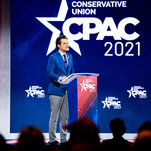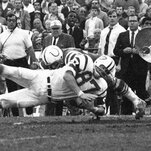What Happened During the 1921 Tulsa Massacre, One of the Worst Episodes of Racial Violence in U.S. History
In February 1915, Thomas Dixon, author of popular novel The Clansman, and D.W. Griffith, the director who adapted the book into the film Birth of a Nation, lobbied then-president Woodrow Wilson for a screening at the White House. The two were sure their story would get a warm reception from the “well documented racist” and onetime scholar who produced a five-volume History of the American People, in which he portrayed the South as “overrun by ex-slaves who were undeserving of freedom,” as Boston University journalism professor Dick Lehr remarks.
Whether or not Wilson actually uttered the words attributed to him afterward (“It’s like writing history with lightning”), he approved the film’s message and rebuffed Black leaders who were “appalled and outraged,” says Lehr. The moment was pivotal for the birth of the Civil Rights movement, he argues in a recent book. Following the country’s entry into World War I, it also lit the fires of what novelist, composer and executive director of the NAACP James Weldon Johnson called “Red Summer”… a summer of lynchings, lootings, burnings, shootings and other violence.
Mass lynchings — ignored or misconstrued as “race riots” for decades, though now properly referred to as massacres — took place all over the country between 1917 and 1923 under various pretexts, “in at least 26 cities,” Deneen Brown writes at National Geographic, “including Washington, D.C.; Chicago, Illinois; Omaha, Nebraska; Elaine, Arkansas; Charleston, South Carolina; Columbia, Tennessee; Houston, Texas,” and — the bloodiest and most destructive of them all — Tulsa, Oklahoma, an event many learned about for the first time when the current president proclaimed its 100th anniversary, May 31st, a “Day of Remembrance.”
On May 31 and June 1, 1921, the mob who rampaged through the Tulsa neighborhood of Greenwood, a prosperous black community just a generation removed from slavery, killed over 300 Black residents, “dumping their bodies into the Arkansas River or burying them in mass graves. More than a hundred businesses were destroyed, as well as a school, a hospital, a library, and dozens of churches. More than 1,200 Black-owned houses burned.” The attackers rained death from above: a report by a state-appointed commission found “Tulsa was likely the first city” in the country “to be bombed from the air.”
“The economic losses in the Black community amounted to more than $1 million,” Brown notes, a figure that cannot account for personal losses that resonated through generations, like those described by the massacre’s oldest living survivor, who testified recently before a House subcommittee. Sonali Kolhatkar writes:
107-year-old Viola Fletcher… testified to Congress a few weeks ahead of the 100th anniversary and recalled growing up as a child in Greenwood in “a beautiful home” with “great neighbors and… friends to play with.” “I had everything a child could need. I had a bright future ahead of me,” she said. A few weeks after Fletcher turned seven, the armed men struck on May 31, 1921. After recounting the “violence of the white mob,” and her memories of seeing “Black bodies lying in the street” and “Black businesses being burned,” she went on to describe the grinding poverty she was thrown into as a result of the massacre.
Fletcher never made it past the fourth grade in school. The promising future that her family had worked hard to give her was obliterated in the ashes of the Tulsa Race Massacre. “Most of my life I was a domestic worker serving white families. I never made much money. To this day I can barely afford my everyday needs,” she told lawmakers during her testimony.
That the anniversary now falls on Memorial Day (then celebrated on May 30th) seems a bitter irony given that much of the backlash toward Black communities came from fear of those returning Black soldiers who stood up against the everyday violence of Jim Crow when they returned from overseas. Birth of a Nation inspired a reborn Ku Klux Klan and its supporters to turn that fear into a crusade, a kind of pre-emptive collective retaliation.
“During the massacres, they murdered and maimed people indiscriminately, unprovoked,” says Alice M. Thomas, a Carnegie scholar and a professor in the School of Law at Howard University. “They went into homes, stole personal belongings, and burned down homes. They used the massacres as a cover to murder without sanction, maim without sanction, and steal without sanction. No one, to this day, has been held accountable.”
Red Summer was primarily driven by what now gets coded as “economic anxiety.” Karlos K. Hill, professor of African and African American Studies at the University of Oklahoma, explains that “the Greenwood District [of Tulsa] was perhaps the wealthiest Black community in the country… a symbol of what was possible even in Jim Crow America.” Referred to as “Black Wall Street” — the moniker given to many other such communities — Greenwood posed a threat: “The fear was, if Black people could have economic and political equality, then social equality would follow right behind.”
Rather than face the frightening prospect of an actual democracy, thousands of white Americans lashed out in Red Summer, burning Black Wall Streets to the ground nationwide. After a century of denial, the U.S. is only beginning to reckon with the massacres, and specifically, with Tulsa. The president’s proclamation marks a historic step in the right direction. In the Vox video above, learn more about a story “you won’t find in most history books.”
As NPR notes, you can also watch another documentary on the Tulsa massacre on PBS.
Related Content:
When White Supremacists Overthrew a Government (1898): The Hidden History of an American Coup
Take The Near Impossible Literacy Test Louisiana Used to Suppress the Black Vote (1964)
Josh Jones is a writer and musician based in Durham, NC. Follow him at @jdmagness
What Happened During the 1921 Tulsa Massacre, One of the Worst Episodes of Racial Violence in U.S. History is a post from: Open Culture. Follow us on Facebook and Twitter, or get our Daily Email. And don’t miss our big collections of Free Online Courses, Free Online Movies, Free eBooks, Free Audio Books, Free Foreign Language Lessons, and MOOCs.
, In February 1915, Thomas Dixon, author of popular novel The Clansman, and D.W. Griffith, the director who adapted the book into the film Birth of a Nation, lobbied then-president Woodrow Wilson for a screening at the White House. The two were sure their story would get a warm reception from the “well documented racist” and
What Happened During the 1921 Tulsa Massacre, One of the Worst Episodes of Racial Violence in U.S. History is a post from: Open Culture. Follow us on Facebook and Twitter, or get our Daily Email. And don’t miss our big collections of Free Online Courses, Free Online Movies, Free eBooks, Free Audio Books, Free Foreign Language Lessons, and MOOCs.












